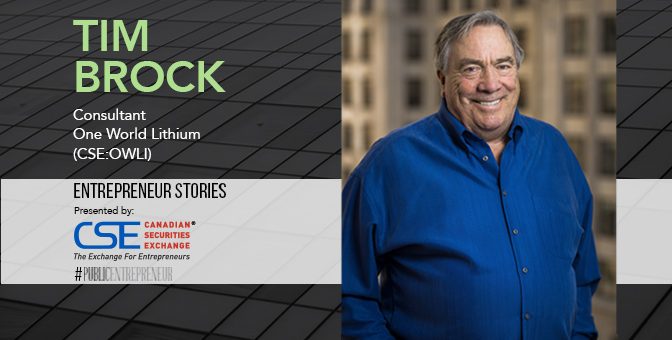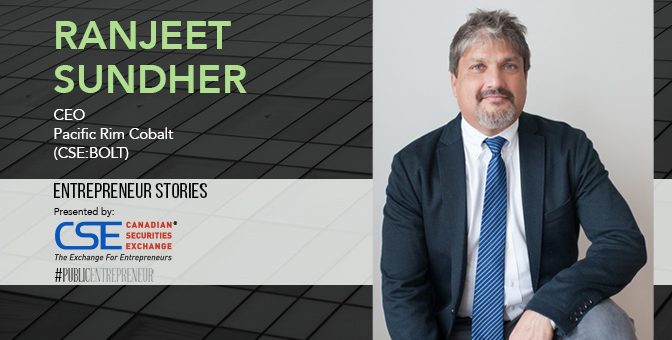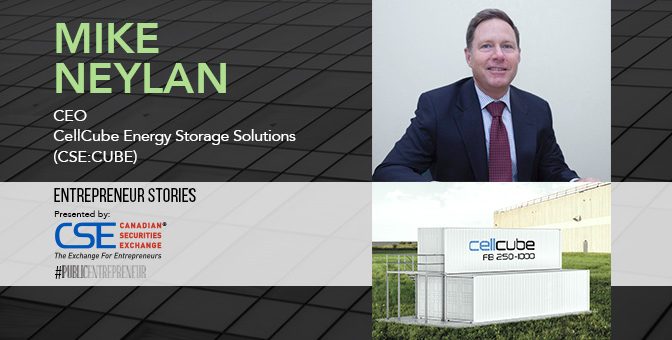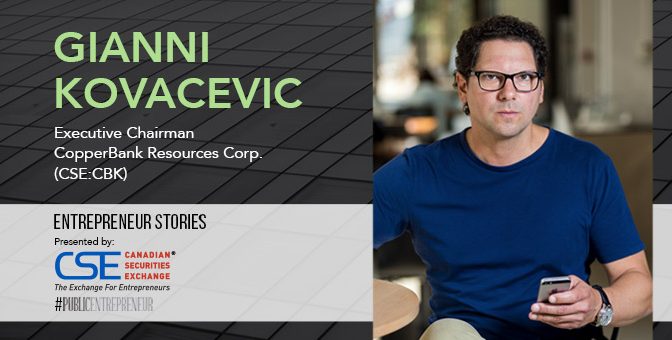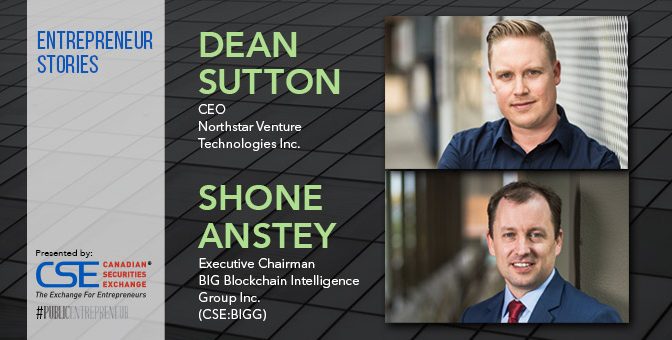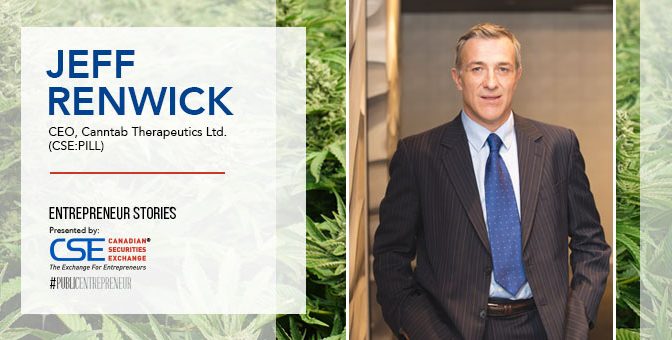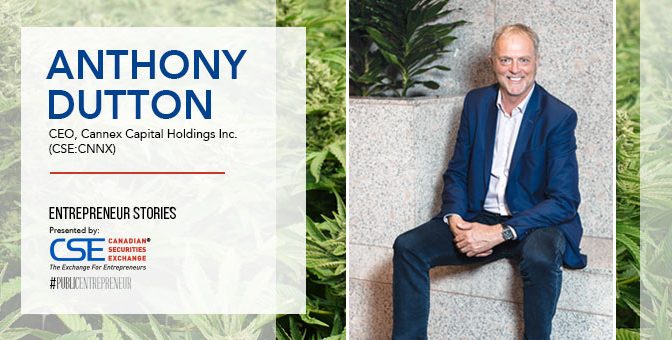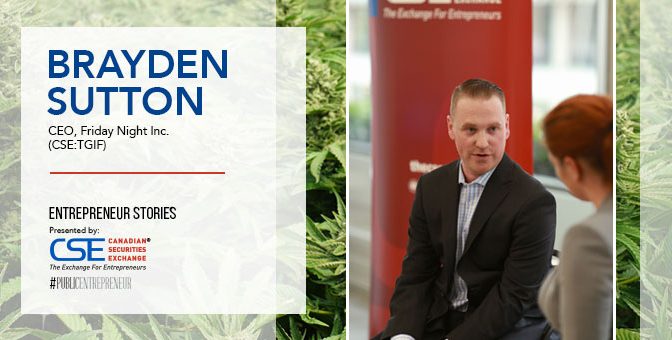Technology is changing the lives of every living thing on our planet and at a speed difficult to grasp. Then there is the question of direction – where is the tech world taking us, and to what end?
To begin understanding these issues, it helps to have insight from someone who lives and breathes technology, but at the same time is not so consumed by it that they lose touch with everyday realities. Someone driven by the outcome of their efforts for human beings, rather than the pursuit of technology for its own sake.
Shafin Diamond Tejani, CEO of Victory Square Technologies (CSE:VST), is firmly in the former group. With a vision for his company built around clear opinions on future trends, he speaks sincerely about both increasing shareholder value and the positive influence he and his team can have on local communities…and those not so local. At the end of the day, Tejani believes the benefits are there for all of us to share.
Public Entrepreneur visited Victory Square headquarters in Vancouver recently for an in-depth discussion of Tejani’s philosophies and thoughts on where technology is headed. Investors and entrepreneurs alike could learn much from one of the city’s leading lights in technology investing and helping entrepreneurs realize their business and personal goals.
Victory Square invests in companies that are shaping the future, and that means you have some precise views on where technology, and the world in general, is going. Can you share that outlook with us? What are you focused on and what do you see for the future that some people might not?
Human nature is very predictable, and history is very cyclical. If you look at the past few decades you see very clear patterns. Our focus recently has been on new emerging technologies, which are disrupting established technology and creating completely new industries. We are seeing things like decentralization, artificial intelligence, Internet of Things, and virtual and augmented reality being the next big movements.
I started my first company during the early dotcom boom of the mid-1990s. The Internet and the Web democratized access to information and connected people from all over the world. We have seen that impact every walk of our lives on a global scale, and it accelerated further with the explosion of mobile phones and smartphones. We can now say that humankind is almost entirely connected.
Humans generally want to do the same things. On the Internet they want to access information, purchase things, play games and watch movies. They also use social media to connect and communicate with one another. But for the last 25 years, most of these activities have taken place on centralized servers. Facebook allows you and I to communicate but it’s a centralized platform. We input the information, but they own that input, and they monetize it to third-party advertisers without us getting a cut of the money.
The impact of global platforms like Google, Twitter, and Facebook leads to problems ranging from the threat of government-ordered censorship to more subtle, algorithmic biases in the curation of material that users consume. These platforms which host and inform our connected public perspectives are unelected, unaccountable, and often difficult to oversee or audit.
We are now living through a new movement to create technologies and services to address these issues. Decentralized technologies that are open source, enabling peer-to-peer interactions in lieu of mediated centralized platforms are the remedy to our current global landscape.
In a centralized system, everything is kept in the same place and can be hacked. In a decentralized network there may still be a Facebook that can create the network, but we all own our own information and we all participate and benefit from how successful that network becomes. People will want to do the same things, but the underlying architecture is going to be different.
From an innovation standpoint, Victory Square focuses on things we know. We like verticals that are commercial and virtually recession-proof. Sports betting is a good example.
Let’s vector in a little closer. How do you choose companies to invest in based on your broader view for the future of the world?
Given that we begin by focusing on verticals we know well, the next thing we do is identify a large customer with a pain point. Then we look at some 80 accelerators we have relationships with around the world to see what problems talented people are trying to solve. We can bring teams to Canada to evaluate them if they are overseas. The evaluation will take place over anywhere from three to six months, and by bringing entrepreneurs to Canada there are a number of programs we can take advantage of that help to mitigate our risk.
We focus on verticals that we have a strong track record and experience in, identify a large customer in that vertical, look wide globally to find the best talent, bring it to Canada to give it all of the advantages of being based in Canada, and then we are able to evaluate the tech and the team as they validate with that large customer we have brought them to.
Tech has been commoditized, so it’s your ability to have an operator who can execute efficiently. Execution becomes the real key. We look for strong teams and leaders who have built a product that customers are willing to pay for. And given that commoditization, you need differentiating factors – someone who can speak well and articulate what they are really doing, and then there is that work ethic and hustle that we also look for in an operator.
Give us an example of an investment and the impact it stands to have on the future.
There are 19 companies in our portfolio doing exceptional things. One of those is FansUnite, which was founded by an accountant and a lawyer who are very passionate about sports betting. We acquired the company about 18 months ago for $2 million, worked with them to build a unique product, and they just oversubscribed a financing of $4.45 million at a pre-money valuation of $13 million. FansUnite is aiming to go public in early 2019.
In the sports betting industry, all bettors are generally betting against the house. You are trusting the house to manage the lines appropriately, trusting them to put the player funds in escrow, and then to pay you out accordingly when the time comes. Paying exorbitant fees and trusting a centralized third party with your funds was what led to FansUnite incorporating blockchain into their business.
A main pain point is that the house is using a third party to process payments, which means they must charge a fee, and it can be as high as 10%. That means if you bet $100, only $90 is actually going into the pool, so you have to win 54% of the time just to break even. They realized that decentralization and blockchain could address this and built their own protocol and currency. FansUnite will become one of the first companies to build the infrastructure that allows any operator to build a blockchain based sports betting application on the protocol. FansUnite is building the first decentralized application which will be a low-margin sportsbook, taking the fees per bet down to an industry low 1% margin for the book. There are many other efficiency benefits as FansUnite aims to change the landscape of the sports betting industry.
Your company materials suggest giving back to the community is important to Victory Square. How does investing in things that make the world a better place fit into the structure of a capitalist enterprise?
My family is from East Africa, and in the early 1970s there was a military coup and we ended up in Canada. We basically won the lottery by landing in Canada, where we had access to good education, stable government, safety and security. The advantage we had in Canada and the thankfulness is tied into a responsibility I have always felt, and it has trickled down to our portfolio companies in the form of something we call TKM: Time, Knowledge and Money.
There are some in our team who might not have financial resources to give, but they have time and knowledge. A graphic designer might donate design services to a philanthropic organization in need of that skill. Lawyers or accountants can provide legal advice or business planning for charities.
Our focus at Victory Square is on vulnerable children and making sure they have the basics, which means access to nutritious food, education, safe environments, love and support. We found that not only do we have the time and capacity to do it as a capitalist enterprise, but if often benefits us because it aligns us with the interests of other socially minded entrepreneurs. There is no negative impact – it is only positive.
There is no typical day for you, but how about a typical week or month? Give us a look inside the world of a manager at the top of an investment organization. What are your biggest challenges and how do you keep on top of all the moving parts?
I am fortunate to have an amazing team and we divide and conquer. If we take September as an example, we are hosting a conference in London called the World Blockchain Forum, where investors, thought leaders and emerging tech companies from all over the world will be gathering, including some of our own. We’ll be connecting with investors and accessing deal flow in the UK.
Right after that we head to Asia, where we have some portfolio companies. We will be stopping in China, Hong Kong, South Korea, Japan, and then we end in Singapore.
Thankfully, Asia is a day ahead because we come straight back to Vancouver for conferences, one of which is Cambridge House’s Extraordinary Future, which we sponsor and are actively involved in, and then the AR/VR Global Summit. At the end of September, we are in Malta for the Malta Blockchain Summit.
Portfolio companies are global, events we host and speak at are global, our talent pool and investors are global, so we are spread out. And alongside all of that, we are managing our portfolio companies and day to day responsibilities, so we have to ensure we have a really organized team, but also a really deep and hard-working team so we can successfully execute on everything.
And there are also lots of activities we run on the philanthropic side – educational programs, food drives, golf tournaments, galas and other events. That initiative is important to us and we have a team that makes sure we devote appropriate time.
Victory Square must have a shareholder group a little different than that of the average public company. Can you discuss the type of investor that backs you?
We attract a wide variety because we are in many different verticals. We have exposure to artificial intelligence and machine learning, to VR/AR and blockchain, as well as mobile games and film. They fall into three categories: institutional investors who have a longer vision, retail investors who don’t fully understand the sector but want exposure, and then there is a big group of investors who support our portfolio companies from the global crypto community. Given that tech is borderless, we are seeing investor interest from all over the world.
If you could convey just one lesson to a talented, budding entrepreneur, what would you tell them?
There are lots of things I think are key, but forced to make a shortlist, I’d offer an analogy. If we needed to go to Florida we could get in a car and start driving, but we might not have enough food or money or gas. We might eventually make it to Florida, but it would not be the most efficient way.
A well considered plan is one of the biggest things. You need a roadmap for where you want to go. But you also have to realize that the direction you initially started out on might not work, so you have to be flexible and adjust. The entrepreneurial journey does not always look like a hockey-stick curve. It can be very volatile, and having that plan enables you to be better prepared to face the challenges and difficult periods and be persistent and determined to get past it, rather than become frazzled and quitting early.
You also need the right attributes, such as strong work ethic, leadership skills, passion and determination. If you put enough smart people together with a good idea or opportunity, you are going to figure it out.
This story was originally published at www.proactiveinvestors.com on September 19, 2018 and featured in The Public Entrepreneur magazine.
Learn more about Victory Square at http://www.victorysquare.com and on the CSE website at https://thecse.com/en/listings/technology/victory-square-technologies-inc.

